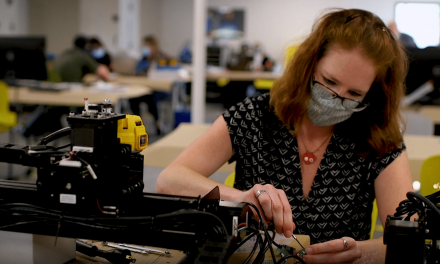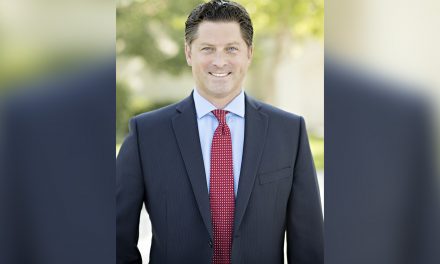SAN LUIS OBISPO — The house is clean with a smidgen of clutter as Christy pours a cup of coffee and reminds her 8-year-old son, Kaden, to get ready for school.
Fall finally turned chilly for the Central Coast and she wonders if it will eventually turn too cold to drop him off at school in the morning and she doesn’t want to think about what happens if he gets sick. It’s the end of the year and she’s used up her five days of sick/vacation/personal days, she’ll just have to take the hit and lose a day of pay.
Parent/teacher conferences start next week, which means Kaden gets out over an hour early all week and she’s still hammering out the details of who can pick him up and where can he be until she gets home.
This scene plays out each morning throughout San Luis Obispo and across the country. Working parents are finding it harder each year to find a place to bring their children while they are working.
In May 2019, a group of business and child care organizations held the “Where’s the Care?” town hall meeting in San Luis Obispo to confront the multitude of challenges that county residents face in the caretaking of their children.
“We want to make sure, first and foremost, that we’re offering quality care for the children that are here with us every single day,” said Maggie Payne, Director of Toddler & Beginning Preschool Atascadero Children’s Center. “We want it to be affordable, but we also want to be able to offer our teachers a livable wage.”
Therein lies the rub — it is nearly impossible to find the quality care that is both affordable for parents and sustainable for the teacher. Payne says that as a result she is seeing more and more teachers leaving the workforce and each teacher’s vacancy leaves less available spots for children.
“The way that our child care systems are set up creates this bizarre paradox whereby it’s not affordable for families and it’s also not sustainable for the workforce in the [child care] profession,” said Wendy L Wendt, Executive Director of First Five SLO County.
The result of the Where’s the Care meeting was the formation of the We Are the Care coalition dedicated to solving the child care crisis and comprised of private citizens, industry professionals, businesses and governmental entities. The WAC formed three task forces to tackle the problem on different fronts — public awareness, economic vitality and determining governmental involvement on the city, county and state levels.
As part of the outreach portion, volunteers are regularly raising the child care issue during city council meetings. On multiple occasions, WAC representatives have spoken to both Paso Robles and Atascadero City Councils during the public comments portion of the council meetings.
The task force addressing economic vitality, called Cross-Sector Collaboration Task Force, focuses on connecting employers and businesses with smart people in early care and education.
“It’s a critical feature to a thriving economy to have affordable child care,” Wendt said.
Local tech giant, MindBody, has a liaison attending the task force meetings. The company provides child care for its employees from infants through their fifth year. Tayler Dale, Center Director of the preschool Little Ensos at the company, said MindBody currently cares for over 60 children and has an extensive waitlist over one year out.
The third task force is gathering information and exploring a cohesive understanding of what is the government’s level of involvement in successful programs in other counties. A priority of the group is to gather stats and facts to provide local elected officials and those running for office with a comprehensive view of the child care landscape for the Central Coast.
On Nov. 5, SLO County Supervisors unanimously approved a collaborative childhood study to examine the needs and bandwidth are within the framework of city, county and school districts.
“It’s an agreement we signed with First Five of San Luis Obispo County and Community Action Partnership and it’s $20,000 for the completion of a child care study to increase access to high-quality affordable child care,” Supervisor John Peschong said.















